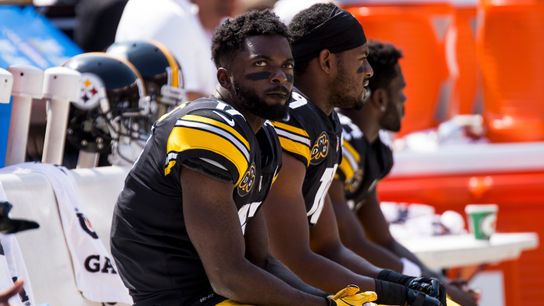With four minutes remaining in what would be the Steelers' final game of the 2017 season, Eli Rogers lined up outside to the left of the formation in front of the Jacksonville bench.
At the snap of the ball, he made a move and stopped, forcing inside linebacker Telvin Smith, who had split out to cover him, to adjust. Trouble was, Smith's leg got tangled with the right leg of Rogers. And the Steelers receiver crumpled to the ground.
Rogers was helped from the field and though the Steelers would finish off that drive with a Ben Roethlisberger touchdown pass to Le'Veon Bell, the Steelers came up short in that AFC Divisional Playoff game, losing 45-42.
Initially, Rogers didn't think his injury was serious.
"He was telling us all he'd be fine," linebacker Arthur Moats said of Rogers the next day at a team meeting. "He was flexing it. Then, an hour later, he was like, 'Man, I tore my ACL.'"
ACL injuries can be like that. They can't truly be assessed until the initial swelling goes down. And after meeting with team doctors, Rogers got the bad news. The timing of Rogers' injury was bad for the Steelers. It was even worse for him.
Rogers is scheduled to become a restricted free agent March 14. The Steelers must decide if they want to make a tender offer to the 25-year-old receiver or allow him to become a free agent.
The ACL injury obviously could be a factor.
"I do, I believe I’ve put enough on tape in crucial moments for teams or the Steelers to take that chance with me," Rogers told me Sunday at the Pittsburgh International Auto Show. "I do believe I’ve put a decent amount on film. Whether I made the play or not, I know I put some really good plays on film. But we’ll see."
Rogers also suffered a slight meniscus tear in addition to his ACL injury. Doctors have repaired the damage and he remains on crutches, though he has already begun a rehab process that typically takes four to six months to complete.
But dealing with injuries isn't anything new for Rogers. He was having a solid training camp for the Steelers in 2015 as an undrafted rookie out of Louisville when he was sidelined by a stress fracture in his foot that landed him on injured reserve. Rogers bounced back in 2016 and caught 48 passes for 594 yards and three touchdowns working out of the slot.
With Martavis Bryant back on the team in 2017 and rookie JuJu Smith-Schuster's emergence, Rogers saw his opportunities limited more in 2017 as his numbers dipped to 18 receptions for 149 yards and one touchdown. But he also took over punt return duties from Antonio Brown, though a costly fumble at Chicago put Brown back in that spot until the team turned back to Rogers later in the season. Rogers had two returns of 20 or more yards and averaged 7.7 yards per return.
Now this.
"It was very disappointing," Rogers said of the timing of his injury. "But I’m not worried about it because the eye in the sky don’t lie. I’ve done all I can do. That supernatural stuff that happens, you don’t really worry about the supernatural.
"Where I am at as a person, I don’t let anything stop my focus because this is just a platform, and I know I’m blessed to be here. Being injured is unfortunate, but it’s not going to stop me."
And he'd love for that to be in Pittsburgh, despite seeing his role decline last season.
"It’s a great city, great fans, the best fans in the league. I believe that," Rogers said. "We have a great offense. Great players, great guys on this team. I’d love to be back here."
What that role would be in an offense that will now see Randy Fichtner calling plays after offensive coordinator Todd Haley was let go at the end of the season remains to be seen. Rogers said he expects the offense to largely remain the same under Fichtner, who moves over from being the team's quarterbacks coach.
"I don’t think the play calling will differ much. Situational football is where the difference will come in some," Rogers said. "I don’t think it will differ much other than that."
But the Steelers also have other free agents with whom they have to deal who could affect what they do with Rogers. Most notably, Pittsburgh has to make a decision in the next couple of weeks with Bell.
They used a franchise tag on the All-Pro running back last season, paying him $12.1 million. That could jump to $14.5 million this year if the two sides are again unable to work out a long-term contract.
Rogers made it clear what he thinks the Steelers should do.
"He’s the best running back in the league," Rogers said. "He’s, what, the best in yardage the past three seasons? Pay the man."

